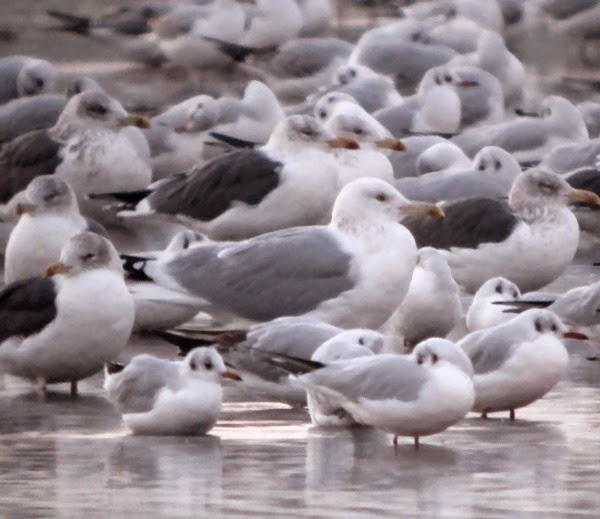Firstly my apologies for the long gap since my last posting but I've been away for a week and frankly there hasn't been that much to talk about. I'm pleased to report that the embryonic floods that I mentioned in my last post have managed to stay put with there having been enough rain to keep them alive and a nice spell of wet weather should be enough to get them to start to expand to a more decent size. Whilst I've been away Meadow regular Dave Doherty has been continuing to check out the patch periodically and in my absence he came up with some good sightings. Firstly he had a probable HONEY BUZZARD which flew over towards Wytham Wood - it's a real shame it was only probable as that would have been a great patch tick. Secondly he had a flock of nine WHITE-FRONTED GEESE fly over as well. There were in all probability the mongrel flock that are seen from time to time - there seems to be a bit of Bar-headed mixed in with some of them.
On my visit today there was a noticeable increase in activity, in fact
the Meadow was positively birdy by recent standards. Firstly the Golden Plover
flock has suddenly grown from counts of around 50 to about 600 today -
at last that gives me something to look through. There were also several
hundred Starlings and a good number of Linnets all working their way over the grass. Lapwings numbered about 50 birds and best of all there were some winter duck back on the grass with about 50 Teal busy
nibbling away at the grass. Sadly there's no proper gull roost yet - we
really need more water before that starts to happen though I did spot a
single Common Gull in amongst a few dozen Black-headeds in the last few days.
 |
| The first Common Gull of the winter |
At least one Kingfisher has been seen regularly near the boats over the last week or so. Also of interest, the leucistic EGYPTIAN GOOSE was back on the Meadow this week in amongst the feral Greylags. According to Tom Wickens it has been spending most of its time on the boating lake at Hinksey Park of late.
 |
| The "ghost" Goose |
With the break in the weather I've noticed a lot more birds coming to my garden feeders with quite a few House Sparrows in amongst them. Sadly, this is quite a noteworthy event as this once common bird isn't usually found in my garden.
News from "up north": Adrian Gray reports a few winter duck (Wigeon, Teal, Shoveler and a TUFTED DUCK) all hanging out in the Gullet and the first few Wigeon are now back on Wolvercote Common. What's more, he and Ian Curtis have both reported a couple of female GOOSANDER on the Gullet as well over the last few days.
So, a bit more rain and we should be back to some decent floods and winter gull roost watching. I can't wait!








